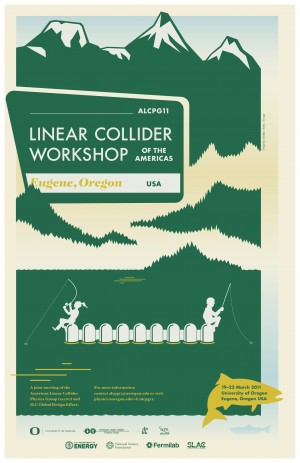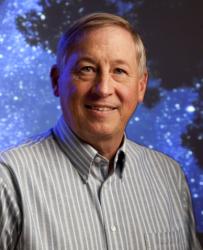I’ve been spending a good fraction of my time over the past weeks preparing for the next regional workshop in the Americas (ALCPG11), which will be held on my home campus, the University of Oregon, US. I’m excited that so many colleagues from all over the world will be visiting Eugene. I’m sure we will have a fruitful workshop, addressing a myriad of collider, detector, physics and overlapping issues.
Much progress has transpired since the last Americas regional meeting in Albuquerque. At that meeting, the International Detector Advisory Group (IDAG) validation process had just been completed and the two validated detector groups were given the challenge of preparing their detailed baseline designs (DBD) and documenting them in the DBD reports, which will now be completed by the end of 2012. We are half way there now, and much has been done, but a lot of the heavy lifting remains. ILD and SiD (the two validated detector groups) will be meeting again with the IDAG in Eugene to discuss their status, expectations and plans toward DBDs for the coming year.
During the Albuquerque workshop the full community of machine builders, experimenters and theorists joined in a plenary discussion on the re-baselining process that the Global Design Effort had begun. This was the first formal presentation by the accelerator community to the future users of the new design, then called Strawman Baseline or SB2009. We discovered differences in perception of the trade-offs that must be made in working through a design that balances costs, risks and performance. Each group within our community looks first towards particular sides of this balancing act. The experimenters and theorists place particularly high priority on physics performance of the future ILC. Quantifying physics performance is not trivial, and trade-offs must be made even when consideration is given simply to physics. However, we also know that costs and risks are essential factors to be considered.
Following the Albuquerque meeting, a much closer communication channel was opened. A group was created by Research Director Sakue Yamada to consider the physics and experimental issues of the new design., Sakue asked me to chair this group and we worked closely with the GDE collaborators to clarify issues and work towards an optimised design. Already by the time the community came together again in Beijing for the ACFA Linear Collider Workshop in March 2010, there was better definition and better understanding, as well as the first efforts by accelerator colleagues to address the concerns of the physics community with new machine ideas. These matured in the following months, as we moved towards the Baseline Assessment Workshops (BAWs).
At KEK for BAW-1 in September 2010 and at SLAC for BAW-2 in January 2011, the final re-baselined design was discussed and completed. In the end, as a result of much effort and good communication, we have achieved a more robust and higher-performing design.
Now we come together again in the Americas for ALCPG11. We are planning a very strong physics programme, with eight parallel sessions and two plenaries devoted to physics. Other topics presented in the plenaries will include Tevatron results, LHC status and plans and work on the Compact Linear Collider study (CLIC) detectors. There will be a lot of reference to the LHC experiments, particularly in the physics talks and in the LHC reports themselves. These are critical to the prospects for the ILC.The detector R&D programme continues to be strong and productive, and we can expect very interesting recent results to be presented. Both SiD and ILD plan their own plenary sessions. And we expect, once again, to have good interaction with our machine colleagues.
I am looking forward to greeting you next month.



Recent Comments